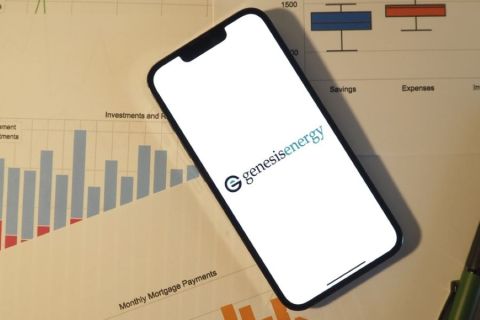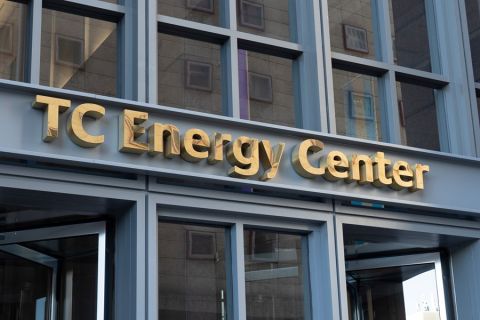Master limited partnerships (MLPs) may be one of the best asset classes for long-term investment, but it’s unlikely that portfolio managers will see returns in 2014 that mirror those of last year’s giddy rates exceeding 20%.
That’s according to Daniel Spears, partner at Swank Capital LLC and president of Dallas-based The Cushing Funds, in a keynote speech at Capital Link’s first Master Limited Partnership Investing Forum in New York.
“I think most people’s expectations need to come down a little bit,” he said, adding that MLP investments are composed of two parts: current distribution or income and the growth of that distribution.
“People’s expectations should be in the high single digits to low double-digit returns,” Spears said. “But that’s not a bad return.”
It’s the disruptive technology of fracing that’s turned the production of hydrocarbons into a manufacturing process and that holds promise for a cost advantage in the U.S. not seen since the end of World War II and the rise of American consumerism.
“We’re bringing back those jobs from companies that manufacture things that, if you drop it on your foot, it hurts,” Spears said. “Any sort of manufacturing that uses natural gas as a feedstock or any industrial manufacturing where energy is the main component … that’s what is benefiting from the energy renaissance.”
The strongest emerging market today, Spears said, is located between Appalachia and the Rockies where the Utica and the Marcellus shales are being developed. That’s where jobs are being created and, what’s more, that’s the best place to invest, he said.
“In the next decade, the economy is going to be driven by the fact that we do have an energy cost advantage focused in
three areas: pure segments of energy, trade and infrastructure,” he said. “That’s where MLPs benefit, and MLPs have got to step up to the plate and build out this infrastructure that’s necessary for us to achieve this dividend growth.”
Domestic infrastructure
Scattered along the U.S. Gulf Coast between New Orleans and Corpus Christi, Texas, more than 100 projects worth $85 billion are under way to expand the refining, chemicals and plastics business.
“Some of these plants originally were going to be built in Qatar, but when … one of these big multinational companies is
looking for where to build a $10 billion plant, they need an able-bodied work force, access to cheap energy, and most importantly, the rule of law,” Spears said. “You know if you build a power plant in Texas, you’re going to own it in 20 years. If you build in Qatar or Egypt, who knows in five years, depending on which regime you have, whether you’ll still own that facility?”
As such, it’s going be in the U.S. midstream sector where the next 10 years of investment decisions will make an impact.
“When you look at most people’s portfolios, they’re underweight in energy industrial and manufacturing because there's not been any need to own those stocks for the last 10 years. We think that’s where people need to be focused because of the fact we have an energy cost advantage that we haven’t seen since the ’50s or ’60s.”
The MLP-ification of energy
Part of the long-term investment thesis, which Spears said includes more MLPs filing initial public offerings (IPOs) this year, is based on the fact the U.S. needs to rebuild its energy infrastructure.
A record 20 IPOs were filed in 2013, a number that’s not expected to be recreated this year, but will remain close.
“As we see numerous IPOs come out, it becomes complicated. Not all MLPs are created equal. And not all of them
should go into the portfolios of a retiree vs. someone who is younger,” he said, adding, “You want a portion of your portfolio dedicated to MLPs because of the need you have on the energy infrastructure development side.”
However, investors should be patient, Spears said.
“The valuation metrics over time have remained flat, and that’s because these companies are spending so much on really good projects,” he said. “You can look at when the EBITDA multiple or [when] the price-to-cash flow went above the average and think, ‘Maybe I should sell.’ That would be a mistake. You have to realize that these companies are investing tremendous amounts of money on good projects, and you just have to give them time for their earnings to catch up so their valuation makes sense.”
Spears said 2014 would be marked by investors focused on general partner restructurings and “the MLP-ification of theenergy sector. People continue to try to take these assets, get the multiple arbitrage and uptick in value.”
The export of liquefied petroleum gas and liquefied natural gas will present huge opportunities, as well as mergers and acquisitions as independent oil and gas companies that are looking at capital allocation and deciding to sell assets that aren’t core to them.
Still, he said, “The fact we have to replumb our entire energy infrastructure—that’s where the majority of this growth is
coming from, and that’s the focus.”
Deon Daugherty can be reached at ddaugherty@hartenergy.com or 713-260-1065.
Recommended Reading
CorEnergy Infrastructure to Reorganize in Pre-packaged Bankruptcy
2024-02-26 - CorEnergy, coming off a January sale of its MoGas and Omega pipeline and gathering systems, filed for bankruptcy protect after reaching an agreement with most of its debtors.
Genesis Energy Declares Quarterly Dividend
2024-04-11 - Genesis Energy declared a quarterly distribution for the quarter ended March 31 for both common and preferred units.
TC Energy Appoints Sean O’Donnell as Executive VP, CFO
2024-04-03 - Prior to joining TC Energy, O’Donnell worked with Quantum Capital Group for 13 years as an operating partner and served on the firm’s investment committee.
Equitrans Midstream Announces Quarterly Dividends
2024-04-23 - Equitrans' dividends will be paid on May 15 to all applicable ETRN shareholders of record at the close of business on May 7.
Baker Hughes Awarded Saudi Pipeline Technology Contract
2024-04-23 - Baker Hughes will supply centrifugal compressors for Saudi Arabia’s new pipeline system, which aims to increase gas distribution across the kingdom and reduce carbon emissions





